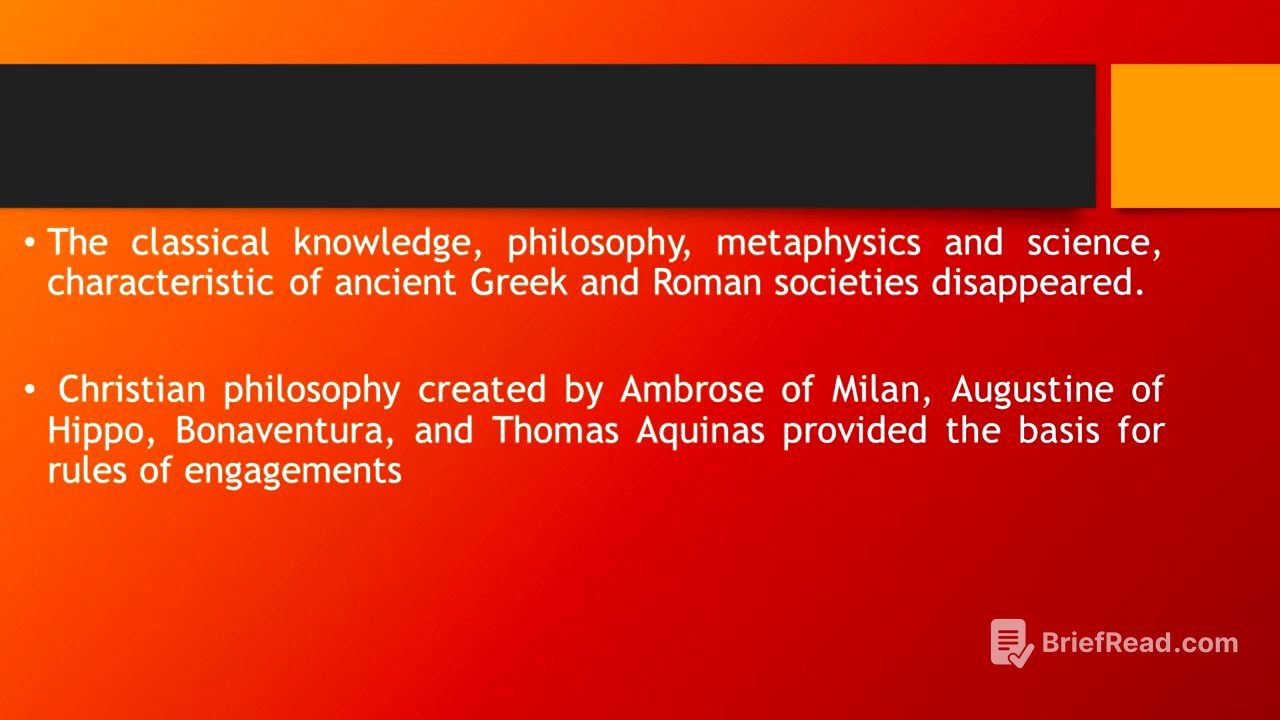TLDR;
This video discusses the arrival of Europeans in Southern Africa between 1450 and 1800, focusing on the Dutch colonists, farmers, and ranchers, and the systems they established. It highlights the economic, social, and political crises in Europe that drove exploration, including food scarcity, the fall of Constantinople, and religious persecution. The video also covers the voyages of exploration, the establishment of the Dutch settlement at the Cape, and the subsequent impact on the indigenous populations.
- Economic, social, and political crises in Europe drove exploration.
- The Dutch established a settlement at the Cape to supply ships traveling to Asia.
- The arrival of Europeans led to the dispossession and exploitation of indigenous populations.
Introduction [0:00]
The lecture will cover the arrival of Europeans in Southern Africa from 1450 to 1800, focusing on the establishment of European dominance through colonists, farmers, ranchers, and the systems created by the Dutch. The arrival of Europeans led to new interactions, political systems, cultural assimilation, and economic relations, including exploitation and domination of indigenous people.
Economic, Social, and Political Crisis in Europe [1:00]
The speaker emphasizes the connection between events in Europe before the 15th century and developments in Southern Africa. Economic crisis due to food scarcity and insecurity in Europe, along with the fall of Constantinople to the Turks in 1453, created an urgency for new routes to Asia. Before the 15th century, Europe relied on the Far East for goods and resources, facilitated by trade since the 10th century. The economy of European states depended on trade with Asia for spices and agricultural commodities.
Fall of Constantinople and the Voyage of Exploration [3:59]
The fall of Constantinople disrupted the direct link to Asia, threatening Europe's food security. This prompted the search for alternative routes to Asia, leading to the European discovery of Africa, America, and Asia. The reasons for exploration included the Renaissance and religious crises in Europe. During the Middle Ages, religion dominated European society, leading to backwardness and ignorance.
Renaissance and Religious Factors [6:37]
The Renaissance, marked by the emergence of universities and the rediscovery of ancient writings, challenged Christian orthodoxy. Figures like Martin Luther King and John Calvin questioned religious doctrines, leading to religious controversies. The Renaissance and subsequent Scientific and Industrial Revolutions shifted focus from religion, driving Europeans to seek opportunities elsewhere due to religious persecution.
Voyages of Exploration and Discoveries [11:10]
Driven by the quest for alternative routes to Asia, the Spanish and Portuguese were the first to seek new paths to the Far East. Bartolomeu Dias in 1487 discovered the Cape while trying to find a new route to Asia, and named it the Cape of Storms. King John II of Portugal renamed it the Cape of Good Hope, recognizing it as a potential route to India.
Vasco da Gama and the Route to India [16:11]
In 1497, Vasco da Gama set sail from Portugal, determined to find a route to India. He landed at Mossel Bay, where the first contact between Europeans and the Khoikhoi took place. Da Gama reached Malindi, where an Indian pilot guided him to Calicut, and returned to Portugal in 1499 with spices, proving the route's profitability. Control of the Cape was recognized as critical for regulating trade between Europe and Asia.
Arrival of the Dutch in Southern Africa [19:15]
After the Portuguese, the Dutch established a presence in Southern Africa. The Portuguese did not value Southern Africa due to its temperate climate and lack of tropical commodities. The Dutch and British East Indian companies were powerful, with the Dutch focusing on Indonesia and the British on mainland India. The long sea journey necessitated refreshing stops for water and vegetables, leading the Dutch to Southern Africa.
Establishment of the Dutch Settlement at the Cape [21:04]
The need for fresh water and vegetables led to the Dutch settlement in Southern Africa. Initially, St. Helena was used, but the Cape was found more suitable. A Dutch shipwreck at Table Bay led to the discovery of the Cape's potential for producing vegetables and providing water. In 1652, the Dutch officially recognized the Cape as a place for their ships to refresh.
Jan van Riebeeck and the Dutch East India Company [24:26]
The Dutch East India Company, recognizing the strategic advantage of the Cape, commissioned Jan van Riebeeck with 125 servants to establish a presence there. Their mission was to grow vegetables, establish friendly relations with the Khoikhoi, and build a fort. The new settlement was initially unproductive, requiring passing ships to provide for the settlers.
Expansion and Labor Shortage [26:54]
To sustain the Cape settlement, the Dutch freed prisoners and servants, granting them land to grow crops. These "free burghers" became key figures in the region. The Khoikhoi, nomadic and affected by droughts, could not establish a strong presence. The land acquired by the Dutch altered the region, dispossessing indigenous people.
Conflict and Nationalism [29:27]
The expansion of the Dutch led to conflict with the indigenous people, resulting in the rise of African and Afrikaner nationalism. The Khoikhoi and San were particularly vulnerable to land expropriation due to their lifestyle. The Dutch also imported slaves from Angola and the Indies to address labor shortages.
Cultural Assimilation and Demographic Changes [31:35]
The absence of women led to mixed marriages between the Dutch and Khoikhoi, resulting in cultural assimilation and demographic changes. By 1662, when Governor Riebeeck left, the Cape was fully established as a Dutch settlement with its own institutions.
